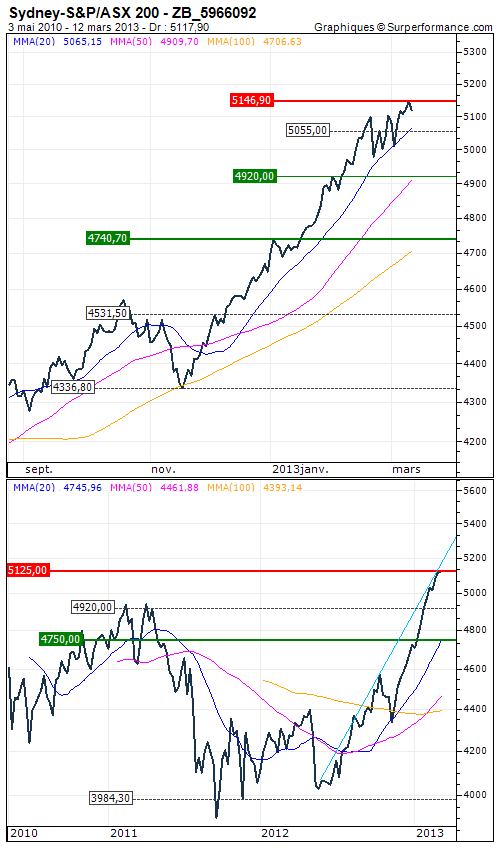S&P/ASX 200 : Jump forward of Kangaroos
By Rodolphe Steffan
As every stock exchange in the world, Australian’s shares have also continued to enjoy the rush of financial brokers to risky assets, encouraged by monetary policies. The Australian central bank has not changed its key rate at 3%, after lowering it by a quarter percentage point in December. The RBA’s Governor, Glenn Stevens, has also once again said that the inflation outlook would allow a new easing of policy, if necessary, to support demand. An accommodative monetary policy remains appropriated and continues to encourage the increase of the Australian’s stock exchange.
In the very short run, investors could be a little bit more prudent following mediocre data published in China, its main trading partner. The last weekend: in January-February, the industrial production grew by 9.9% and retail sales by 12.3% over a year, figures which seem to be high but that are below market’s estimations, which was expecting better thanks to the Chinese’s New Year, usually in favor of consumption. About inflation, it rebounded in February in China, 3.2% after 2% in January, driven by rising food prices.
Graphically, an impressive uptrend is there since December 2012, supported by the 20-day moving average. A consolidation could take place in case of breakdown of the 5050 points level. This would be a signal of a downward reversal of the dynamic in the short run and pave the way to a comeback on the 4920 points then 4750 points by extension. We decide to take a short position.
This scenario can be played through S&P/ASX 200 Index Futures (code: SPI).


 S&P/ASX 200
S&P/ASX 200 

